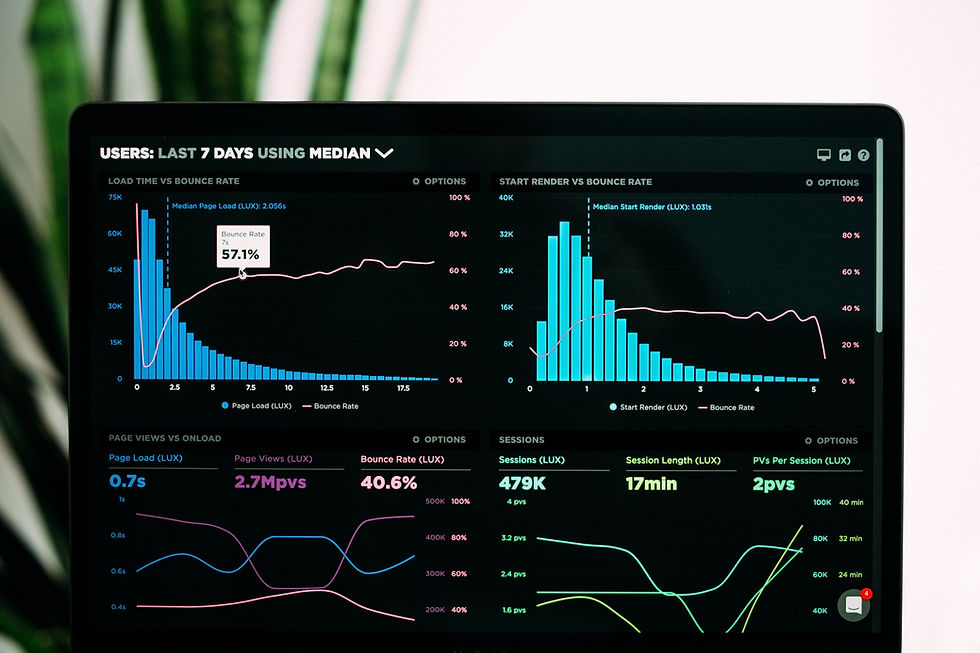Unlocking Insights: How Data Lineage Empowers Users
- Kartik Dahake

- Oct 12, 2023
- 3 min read
Updated: May 16
Imagine you're planning a road trip across the country. You have a map, a GPS, and a trusty co-pilot. Each of these elements plays a critical role in ensuring a smooth journey. However, imagine if you and your co-pilot spoke entirely different languages—like trying to navigate with one person speaking English and the other speaking French. This language barrier could lead to confusion, wrong turns, and a frustrating journey.
In the world of data integration, this language barrier exists between technical data specialists and non-technical business users. This divide often results in misunderstandings, errors, and inefficiencies in the data integration process. But don't worry; there's a solution that acts as a universal translator: Data Lineage.
Understanding Data Lineage
Data Lineage is like a GPS for your data. It tracks and documents the journey of data from its source to its destination, showing each step, transformation, and interaction along the way. Just as a GPS simplifies complex routes, Data Lineage makes data integration understandable, providing a clear path to follow.
Data Lineage plays a crucial role in ensuring data quality, compliance, and overall data management. Data Lineage simplifies complex data integration processes by visualizing them in a way that both technical and non-technical stakeholders can understand.
The Language Barrier
Within the data landscape, two distinct groups communicate using unique dialects. On one side, data specialists are fluent in the technical workflows of SQL, ETL, and APIs. On the other side, you, the business user, are well-versed in business terms programmed in these workflows e.g. revenue, customer satisfaction, and market trends.
This divergence often feels like navigating two different linguistic territories, doesn't it? It can lead to misunderstandings and challenges when making data-driven decisions. Data Lineage serves as that essential bridge, enabling effective collaboration and empowering smarter decision-making.
Data Lineage for Business Users
For business users, Data Lineage is a game-changer. It demystifies data processes, allowing them to gain insights without drowning in technical jargon.
For instance, a marketing manager trying to understand the impact of a recent advertising campaign. With Data Lineage, they can trace the journey of campaign data, from click-through rates to revenue, and identify the campaign's true ROI.
Data Lineage also supports data-driven decision-making. Business users can confidently rely on Data Lineage documentation to make informed choices. Data Lineage is essential for business users as it:
Enhances Data Quality: It allows users to trace and rectify data issues at their source, improving overall data quality and reducing errors.
Enhances User's Trust: Reliability on data-driven decisions increases, as the users know exactly where the data is coming from and how it's been transformed and validated.
Facilitates Regulatory Compliance: By showcasing how data is handled, it assists businesses in demonstrating compliance with data privacy regulations.
Supports Risk Mitigation: Data Lineage reveals data dependencies and vulnerabilities, enabling proactive measures to mitigate potential risks.
Promotes Data Democratisation: Data lineage tools allow for democratisation through user ratings, comments and collaboration. Making data understanding and reliability managed by the users for the users.
Data Lineage for Data Specialists
Data Specialists benefit equally from Data Lineage. It serves as a powerful debugging and troubleshooting tool. When an error occurs in a data pipeline, Data Lineage reveals precisely where the problem lies. This accelerates error detection and resolution, reducing downtime and minimizing the impact on business operations.
Additionally, data specialists can use Data Lineage to optimize data pipelines. By visualizing the entire data flow, they can identify bottlenecks, redundancies, or areas for improvement. This ensures more efficient data processing and enhances overall data quality.
Data Lineage Best Practices:
Comprehensive Documentation: Maintain detailed records of data sources and transformations.
Automated Tracking: Use tools for automatic Data Lineage updates.
Version Control: Apply versioning to track lineage changes.
Regular Audits: Verify and validate Data Lineage accuracy.
Metadata Management: Consistently tag metadata for easy discovery. These practices optimize data flow management and accuracy.
Do you often see a disjoint between technical and business users? Is there a gap between technical and business users, hindering effective communication and collaboration? Are misunderstandings, errors, and inefficiencies in your data integration processes holding your organization back from its full potential?
If the answer is yes, then Data Lineage might be a worthwhile consideration for your organization.
Explore how Fluidata's Data Lineage solutions can optimize your data journey. Whether you're a data specialist or a business user, Fluidata can help you harness the true potential of your data, ensuring clear communication and data-driven excellence. Don't let data complexities be a barrier to your organization's success. Take the step towards data-driven excellence today.
If you have any questions about Data Lineage, our team is available at hello@fluidata.co
Author: Kartik Dahake
Data & Analytics Consultant, Fluidata Analytics LLP



Comments